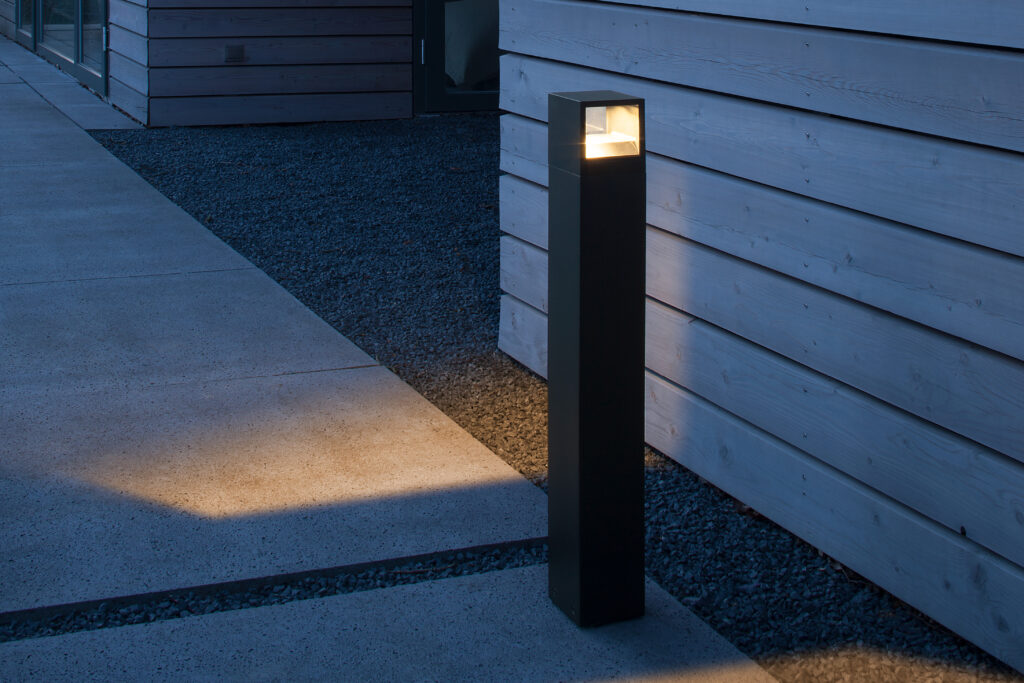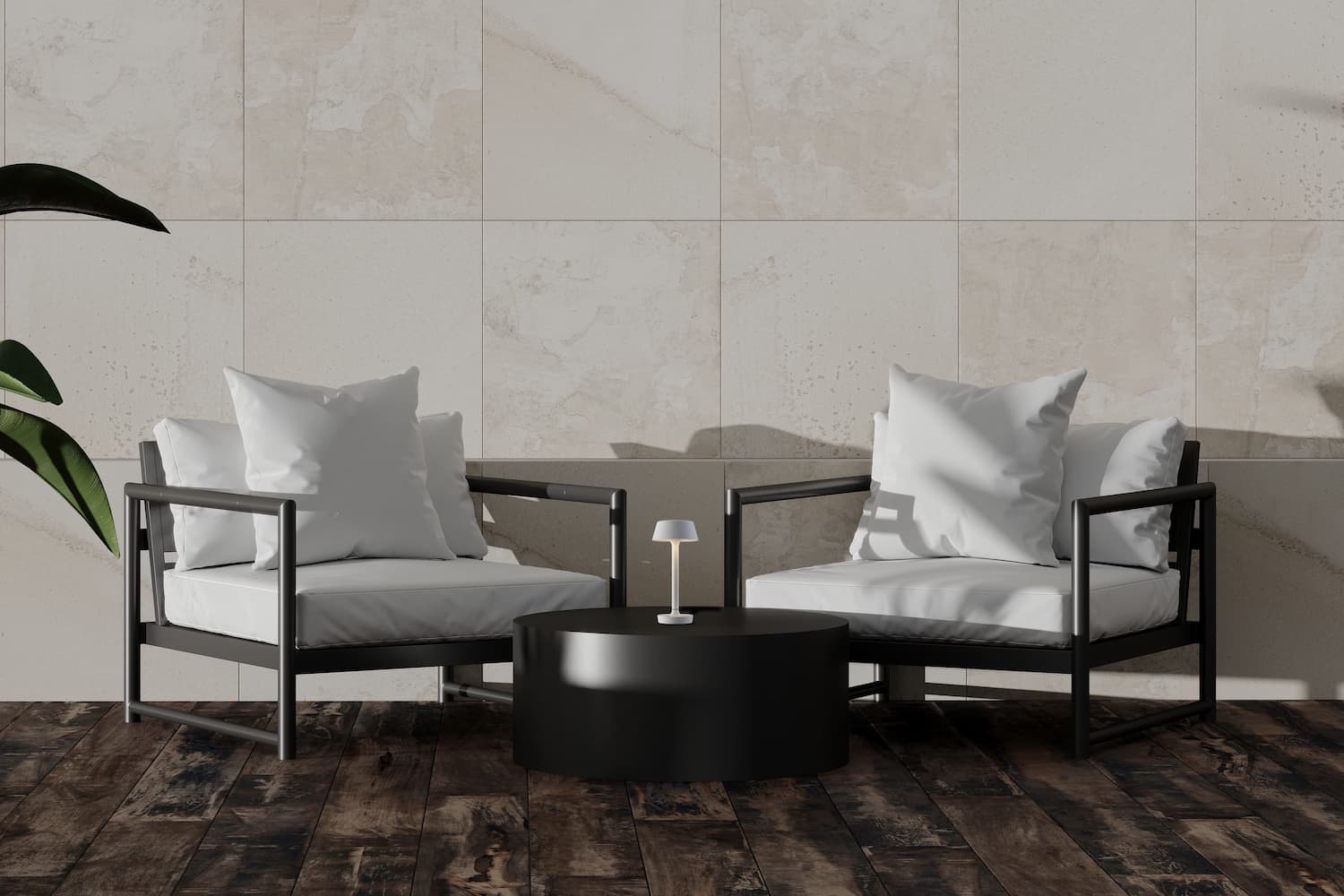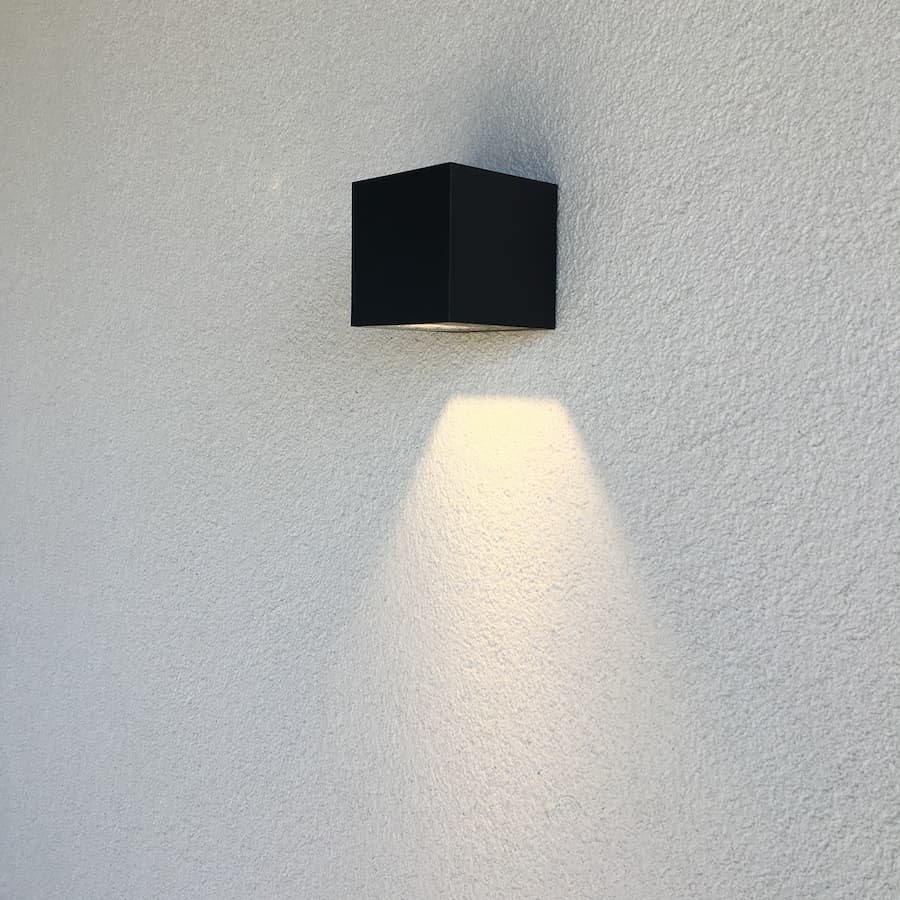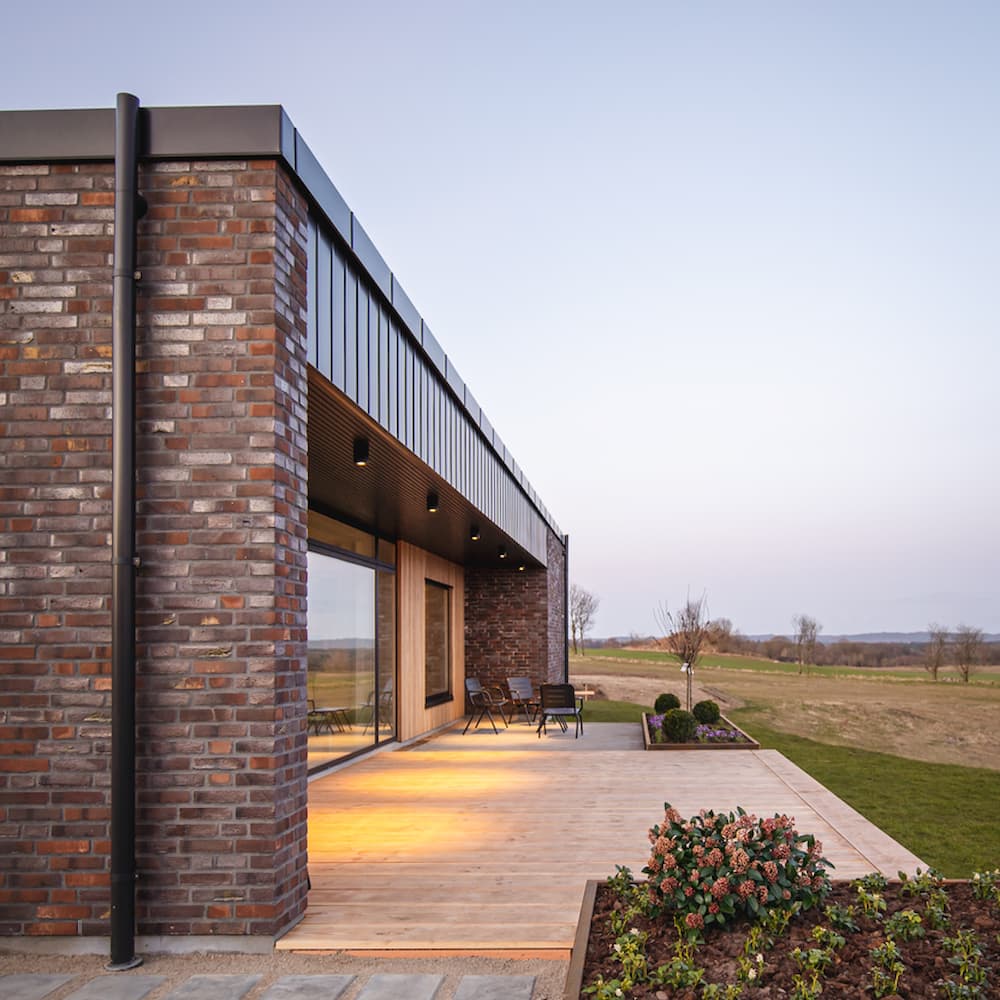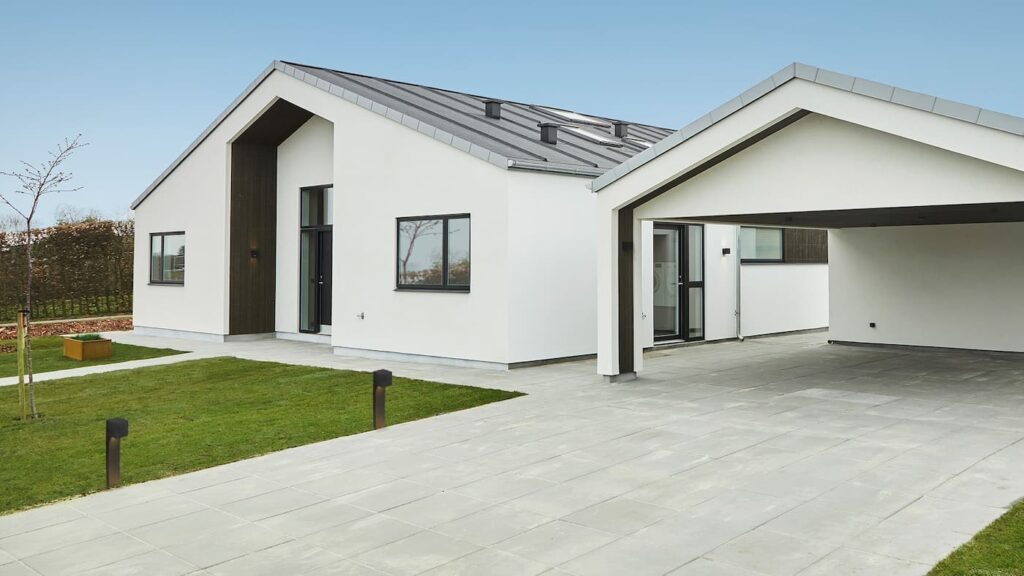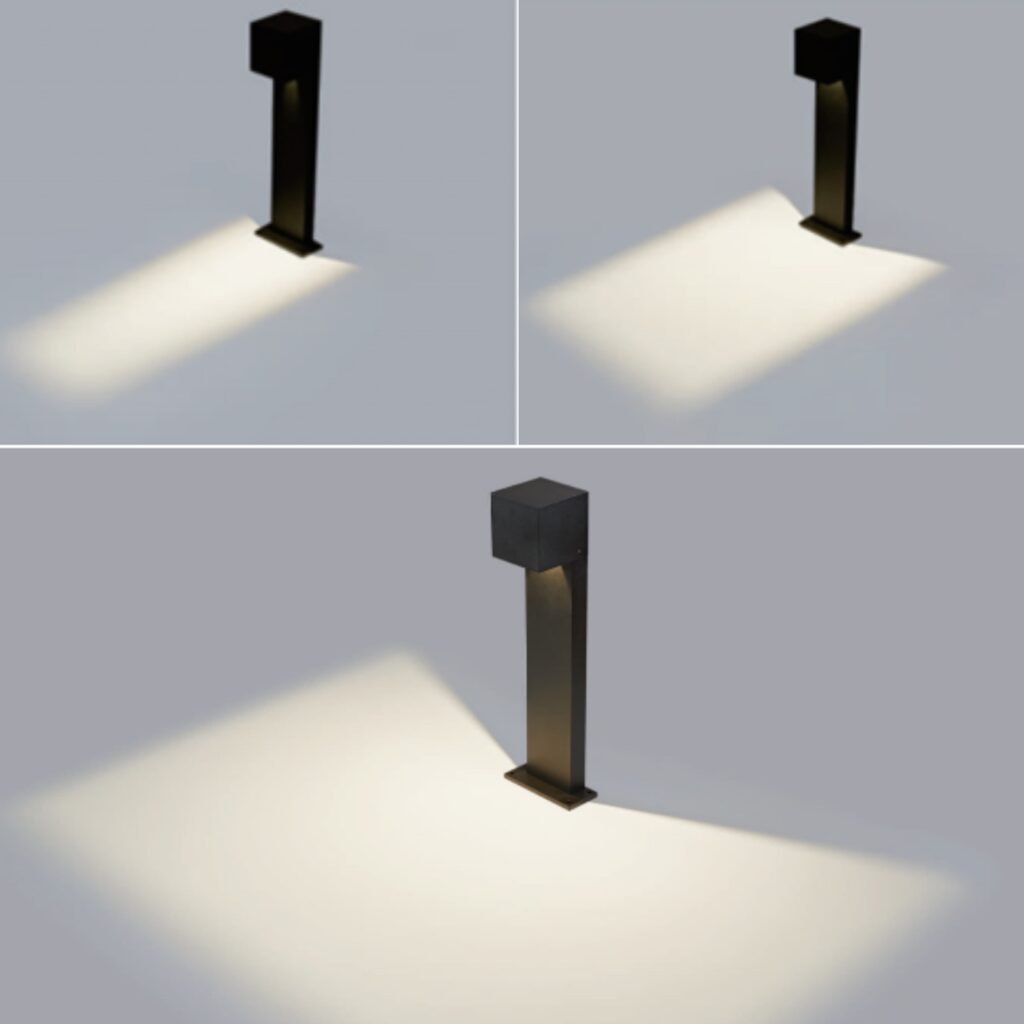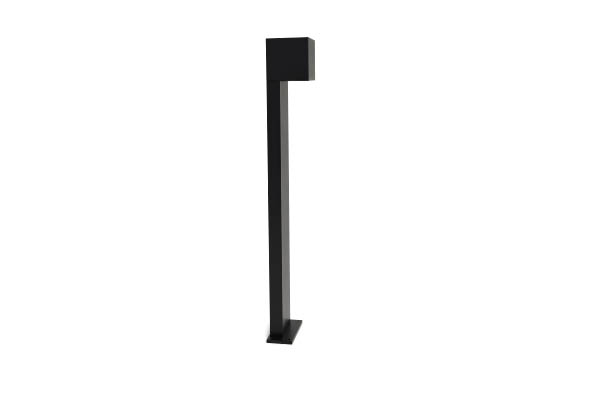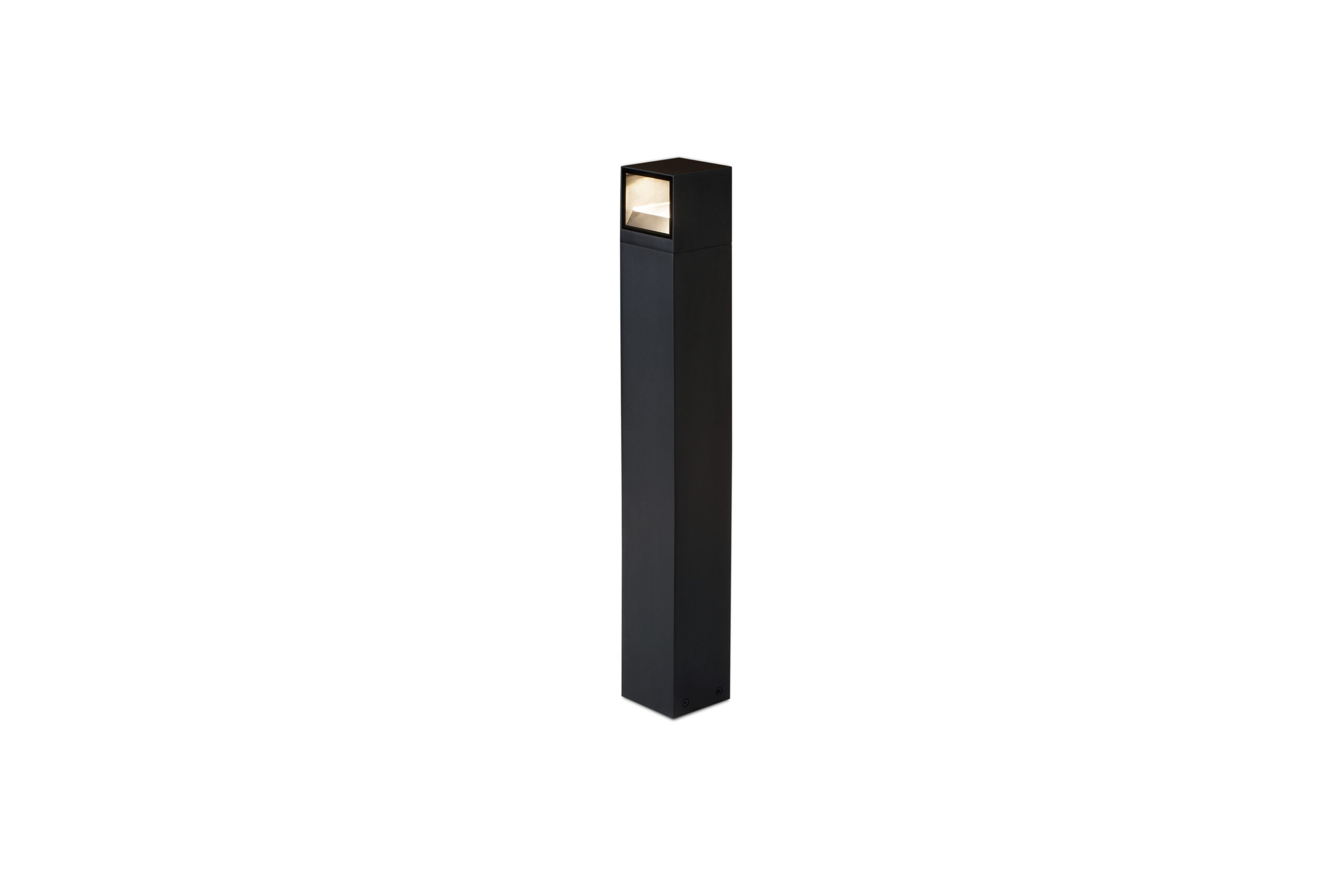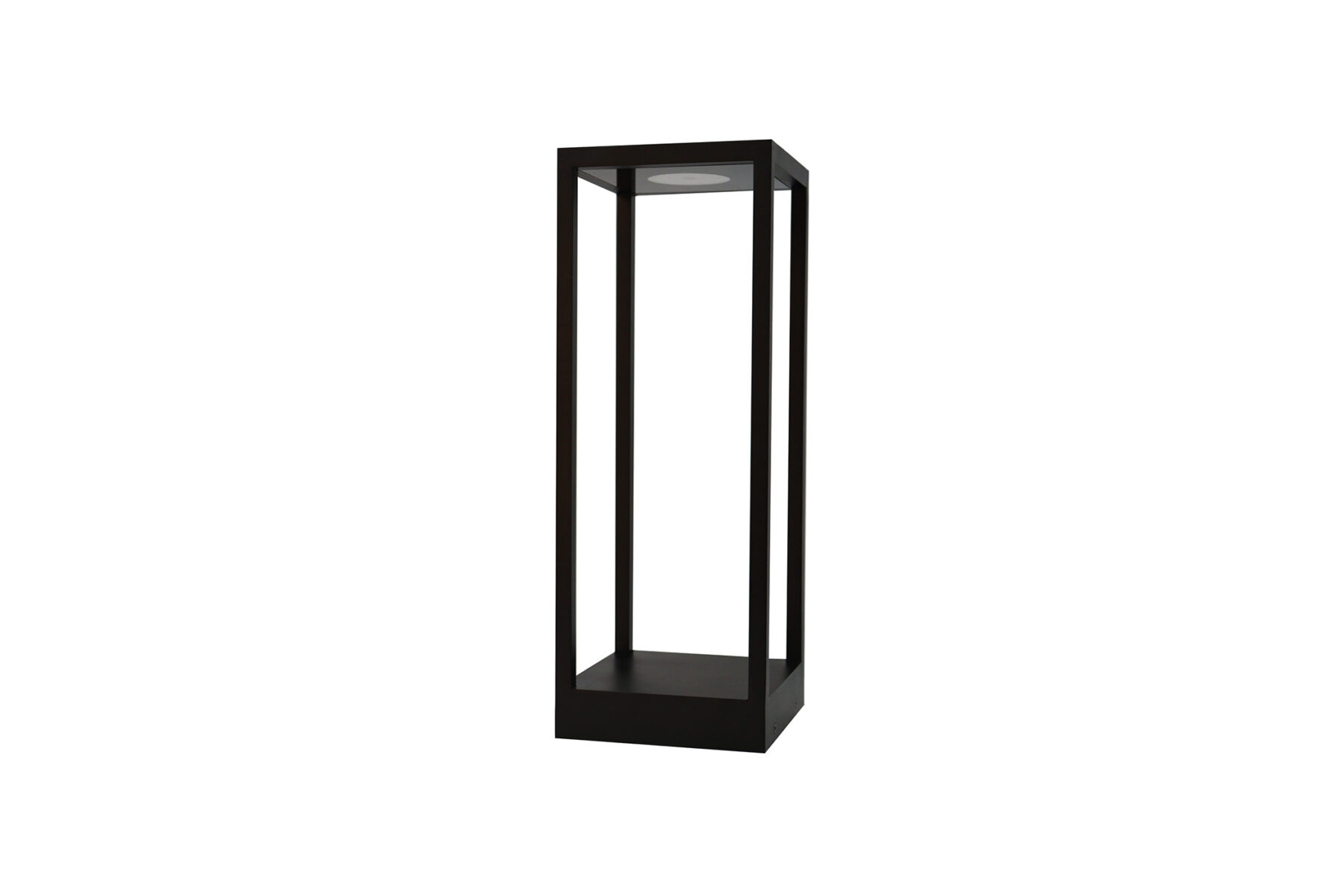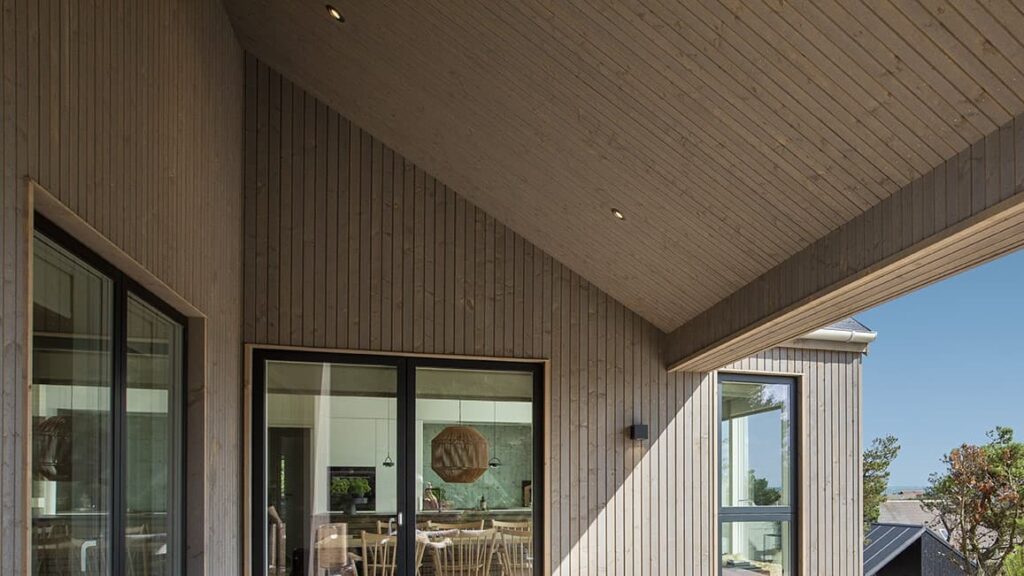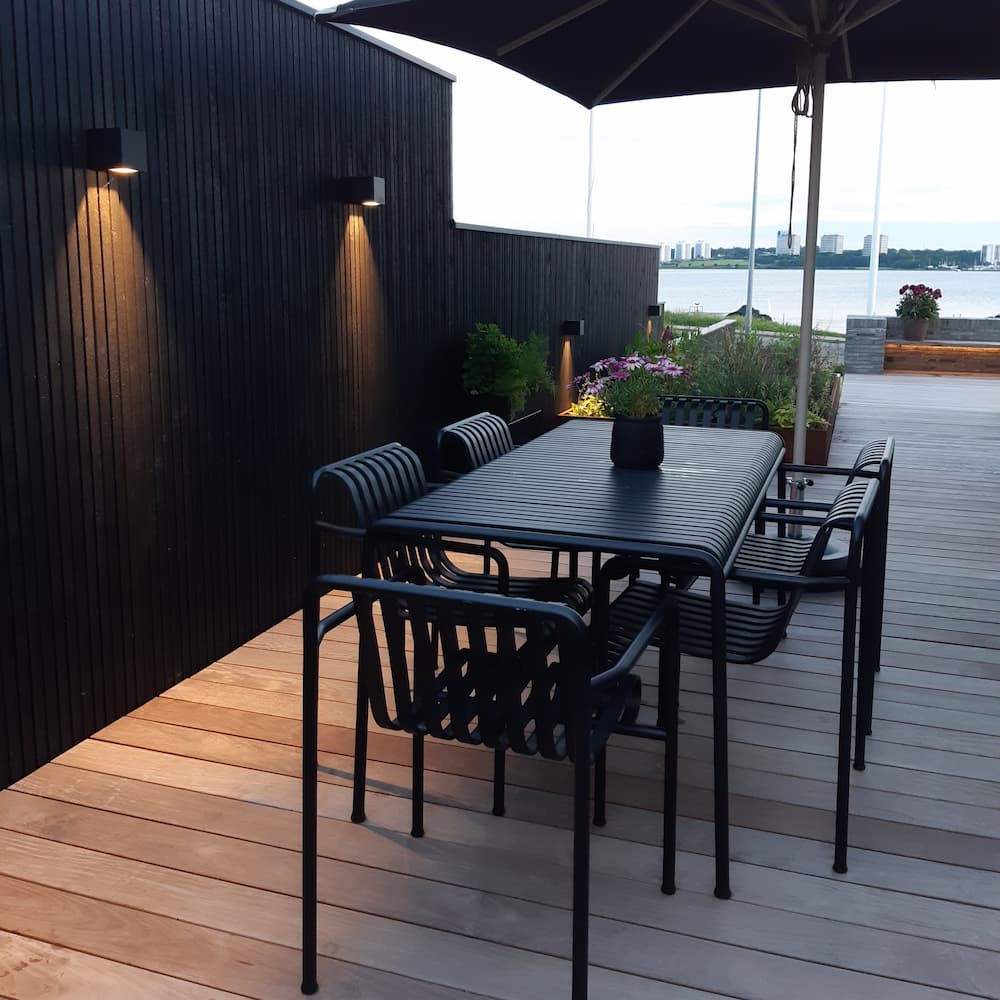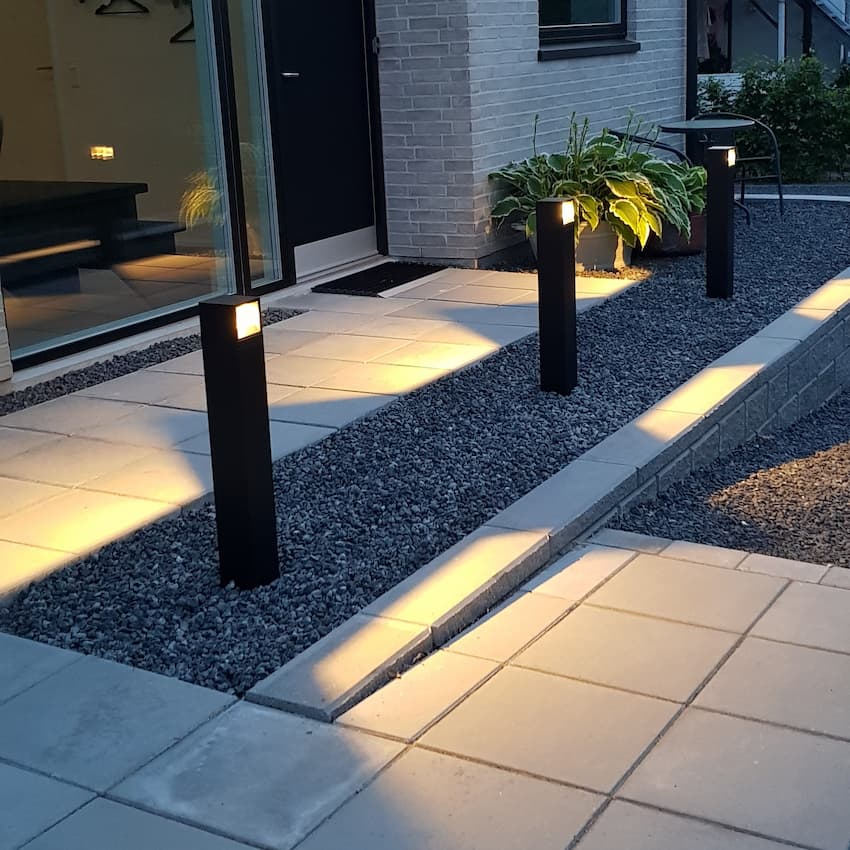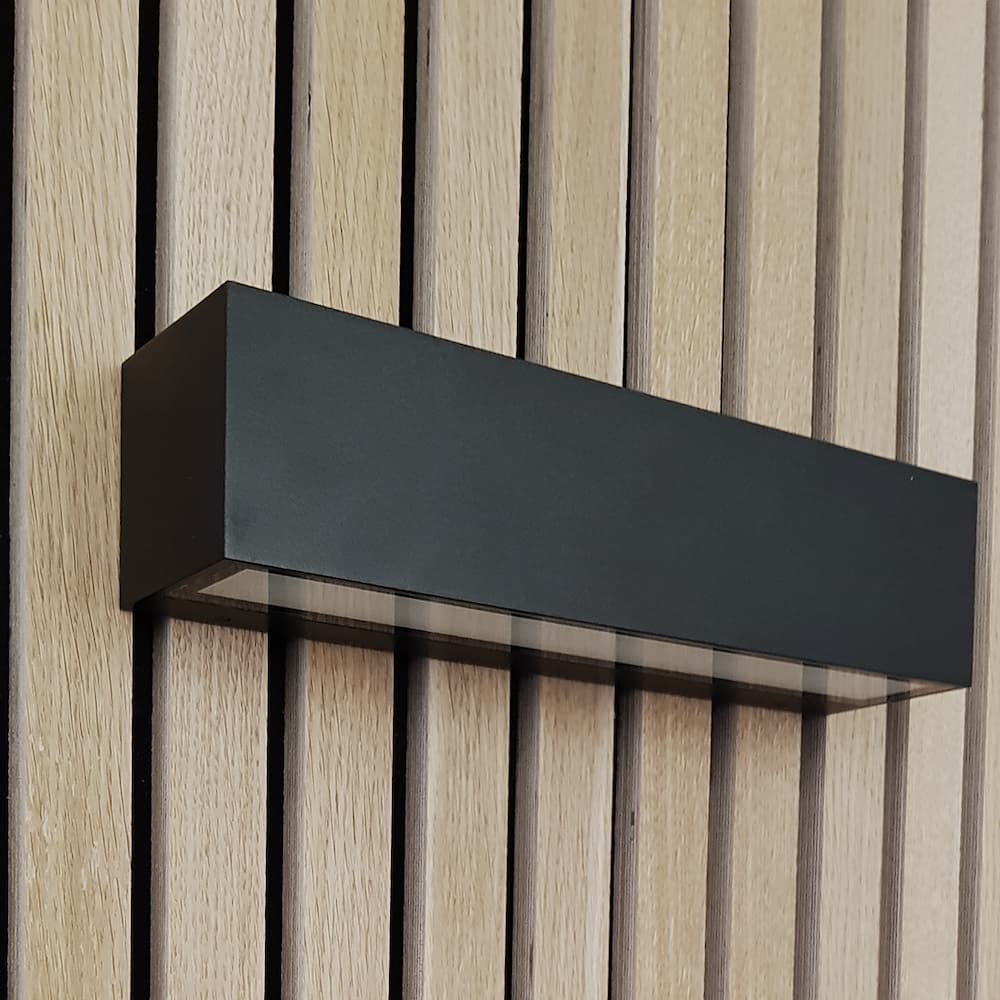Guide to outdoor lighting
- Af Søren Rasmussen
- Last updated 24. April 2024
As darkness falls, outdoor lighting plays a crucial role in creating the right mood and functionality in your outdoor space.
Whether you want to create a cozy atmosphere on your terrace for those warm summer evenings, improve the safety of your home during the winter or simply highlight your beautiful garden, the right outdoor lighting is key.
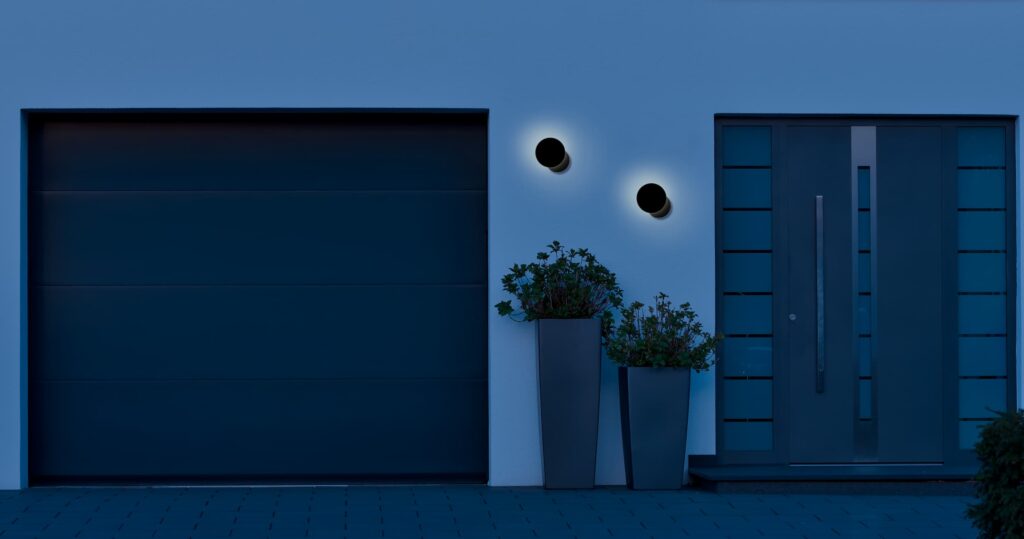
A bit about the author:
Søren Rasmussen
Share post:
Related posts:
In this post, you can read more about the different aspects of outdoor lighting that are worth considering when looking for good lighting for your outdoor space.
We will focus on the different types of lights – from general lighting to decorative lighting such as outdoor string lights and battery lights. In addition, we’ll take a closer look at the different types of modern outdoor lights, placement of your outdoor lights and important factors such as IP ratings, materials and sensor options.
Are you looking for inspiration or advice on lighting elsewhere in your home? Then we recommend you visit the page below, where you’ll find more blog posts with guidance on lighting and lamps in your home.
Different types of lights
There are many great lights and lighting solutions on the market that are suitable for different purposes.
Before you buy your outdoor lights, it’s therefore important to consider which area needs outdoor lighting and what the most important function of your outdoor lights is. This will give you the best starting point for finding the light that provides the best light for the purpose.
Outdoor lighting can be broadly divided into general and decorative lighting.
General lighting - for safety and good orientation
General lighting is the primary source of illumination in outdoor areas. There are many different types of lamps that can be used for this purpose, including outdoor wall lamps, outdoor ceiling lamps, post lamps, garden lamps, and spotlights.
What these various lamp types have in common is their ability to provide sufficient and effective outdoor lighting, allowing safe navigation around the house.
General lighting serves purposes such as enhancing driveway safety, illuminating paths, lighting up staircases, and providing orientation around the front door and other entry points. Practical outdoor lighting also makes it much easier to find keys and other belongings that can be challenging to locate once darkness falls.
These outdoor lamps will provide relatively strong light and establish a good foundational illumination around your home.
Decorative lighting - from outdoor string lights to battery lights
Decorative lighting is ideal if you want to add aesthetic appeal to your outdoor space. There are many ways to achieve decorative outdoor lighting, including lanterns, string lights or other decorative lighting elements that contribute to the right atmosphere.
Decorative lighting can rarely stand alone, but is a great complement to your other outdoor lighting. Outdoor string lights, for example, can be used all year round and are ideal for creating a cozy atmosphere on the terrace. The category also includes small solar cell lights and battery lights, which are perfect to take outdoors on the garden table on a warm summer evening.
The battery lamp, Companion T1, is both practical and beautiful for use as decorative outdoor lighting on the terrace and in the lounge area. The dimmable function makes it easy to adjust the light to the desired mood, and you can position and reposition the lamp as you wish.
Different types of outdoor lights
When considering different types of outdoor lights, it’s important to consider both functionality and aesthetics.
There is a wide range of outdoor lights to choose from, including outdoor wall lights, garden lights, spotlights and more. The choice of lights depends on your personal style, your needs and the possibilities of your outdoor space.
By combining different types of lights, you can achieve the perfect outdoor lighting that fulfills all your wishes and creates a beautiful atmosphere around your home.
Outdoor wall lights
Outdoor wall lights are a versatile solution that can be mounted on walls, posts or other vertical surfaces. An outdoor wall light provides good general outdoor lighting and can also act as a decorative element on the facade of your home.
Outdoor wall lights come in a variety of designs and materials, and it is important to find a wall light that matches the style of the house and facade. What the outdoor lights we offer at ANTIDARK have in common is a clean and classic design that suits most types of houses, from a beautiful brick villa to a newly built house.
Outdoor wall lights are available in two versions. Either with up/down light that shines both upwards and downwards, or a downlight only version.
The choice depends largely on the facade and the expression you want to create. If the wall is a good height, an up/down version is perfect, as it will illuminate the entire facade beautifully. On the other hand, if the wall is low, it may be preferable to choose a downlight only luminaire, as the upward light doesn’t have much room to spread.
In our outdoor lighting range you will find both uplight and downlight wall lights with built-in LED light sources, which are energy efficient and have a long lifespan.
Garden lights and bed lights
Garden lights and bed lights add a magical glow to your outdoor environment. These lights are perfect for illuminating flower beds, hedges or paths in your garden.
As well as providing functional lighting, they create a welcoming ambience. They can help show off beautiful plants and landscaping, transforming your garden into a magical place even at night.
What’s more, bed lights, or bollard lights as they’re also known, are a great solution for adding safety to various pathways if you can’t or don’t want to install a wall light.
ITA Flex is a suitable outdoor light for this purpose, as the light is directed downward, illuminating the pathway. The light beam is also adjustable, allowing you to switch between more or less focused light. This makes it a versatile outdoor light for the driveway and other areas around the house.
In our selection of outdoor lights, there are also garden lights that provide a more diffuse light. Here, Ita and Frame Outdoor can be mentioned. Both are an ideal choice as bed lights or for the terrace since the light is spread over a larger area. All of our bed lights have built-in LED light sources.
Spotlights
Outdoor spotlights are a good form of outdoor lighting if you want a discreet and functional solution for eaves, canopies, and carports. They provide good general lighting for these areas while keeping your wall completely simple.
There are several different solutions for outdoor spotlights. They come in various shapes, colors, and designs with built-in LEDs or with replaceable GU10 light sources.
The classic solution is to choose a spotlight in the same color as the surface it’s mounted on, as it provides the most discreet appearance.
Placement of outdoor lights
The placement of outdoor lights is crucial for achieving the right illumination. As mentioned earlier, it can be advantageous to combine various types of outdoor lights to achieve the desired ambiance and functionality all around the house.
Light in the driveway
Driveway lighting provides guidance and safety, especially in the cold months when it can be slippery.
If you want If you want subtle lighting to help you navigate to and from your car, a bollard is a good option. Essentially, a bollard is a miniature lamppost that provides well directed downward guidance light. In other words, it doesn’t illuminate the whole area.
If you have a wall along your driveway, you can also use outdoor wall lights. If you choose a model that directs light downwards, they can serve the same purpose as a bollard, but also provide more light to the area.
Feel free to use multiple lights to ensure good orientation throughout your driveway.
Lighting at the front door
Light at the front door makes it easier to find your way around and creates a welcoming atmosphere when it gets dark. It’s a good idea to consider outdoor lights with a sensor so that the light comes on automatically when there’s movement.
A classic solution is to use a nice wall light on either side of the door, or spotlights if there is an overhang above the door.
Cozy terrace lighting
The right lighting can transform your terrace into a cosy and relaxing space where you can enjoy time with family and friends long after the sun has gone down.
To create a cosy atmosphere on your terrace, you can use luminaires that provide soft, subdued and pleasant lighting. A relaxing atmosphere is better achieved with warm rather than cold light, so it’s worth thinking about this when choosing lights.
Light sources such as outdoor wall lights, fairy lights or a small battery-powered or solar lamp on the table can help create the right atmosphere. Uplighting can also create beautiful lighting effects on walls and surrounding plants.
Light in the garden and along pathways
Well-designed garden lighting is essential for safe and comfortable navigation. It is advisable to use lamps with light directed downwards, as this provides better visibility and makes it easier to spot any irregularities or slippery surfaces.
Wall lights can be mounted on fences and garden walls, while bed lights can be placed around the garden or along paths. To create the right ambience, it’s a good idea to avoid bulbs that are too bright. Instead, consider installing several garden lights to create a more even and pleasant lighting throughout the garden.
Important when choosing outdoor lights
Once you know the purpose of your outdoor lighting and have identified the type of lamp that will best fulfil that purpose, there are a few important things to consider before you make your purchase.
The IP rating
The first thing to consider is the IP rating, which indicates how well the luminaire protects against water and dust. If the lamps are to be installed in areas where they may be exposed to rain or moisture, you should choose lamps with a high IP rating to ensure durability and long life.
IP rating requirements may vary depending on whether you are installing a ceiling luminaire under an overhang or a free-standing bed luminaire. Always check this to ensure your lamp will last for many years.
The material
The choice of materials also plays a crucial role in the durability and appearance of outdoor lighting.
There are several exciting materials to consider when choosing outdoor lighting.
Two of the most popular materials are aluminium and stainless steel, both of which are corrosion resistant and offer a modern and stylish look that is suitable for many different types of outdoor areas.
Outdoor lights with sensors
In addition to choosing LED outdoor lights or LED bulbs, you can make your outdoor lighting even smarter and more energy efficient by adding a sensor.
If you want smart outdoor lights with sensors that switch themselves on and off, there are several options to consider. Some lights come with a built-in sensor, but often you need to retrofit one – and luckily this can be done relatively easily by an electrician.
There are three different solutions when it comes to sensor-controlled lighting.
Light sensors
Light sensors, also known as photocells, detect the level of light in the area and automatically switch the light on when it gets dark and off when it gets light.
This type of sensor is useful if you have an outdoor area where you always want light when it’s dark.
Motion sensor
As the name suggests, this type of sensor switches the light on automatically when motion or heat is detected and switches it off again after a while. A motion sensor is useful for areas that only need to be lit when someone is present.
This could be along a pathway or driveway, for example. It’s also a good way of keeping unwanted guests out, as the light switches on automatically when there’s activity.
Timer
A timer allows you to set precise times for lights to come on and off.
This gives you complete control over your lighting and is a useful solution if you want the lighting to follow a specific schedule, regardless of light levels or movement.
Installation of outdoor lights
When you need to install outdoor lighting, it is important to prioritise safety and correct installation.
Outdoor lighting is usually a permanent installation and should not be installed by yourself.
It requires the assistance of a licensed electrician who can ensure that the installation meets the necessary standards and regulations.
Frequently Asked Questions about outdoor lighting
When designing outdoor lighting, the first step is good planning. Start by identifying the areas to be lit and the purpose (orientation, ambience, decoration, etc.). Then choose the luminaires that best suit the purpose and the style of the house and garden. Remember that installation should always be carried out by a qualified electrician and also consider whether sensors should be installed.
Although outdoor lighting is primarily designed for outdoor use, it can also be installed indoors. In particular, outdoor lighting fixtures and spotlights can be used in the bathroom, as they often have the necessary IP ratings for wet areas.
A sensor lamp works by detecting changes in ambient light levels or movement. When it detects a change, it automatically switches the lamp on and then switches it off after a preset period of time to save energy. You can set a timer to switch on and off at specific times.
The installation of outdoor lighting requires a licensed electrician. It is a permanent installation and you should not install it yourself.
The exact number of lumens required for outdoor lighting depends on the purpose and size of the area. In general, 1000 to 2000 lumens per square metre is recommended for security and 200 to 400 lumens per square metre for general lighting.

